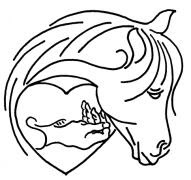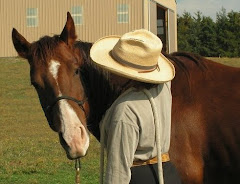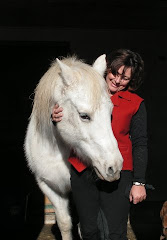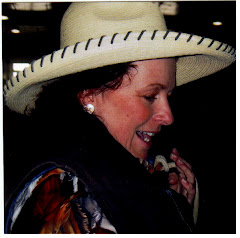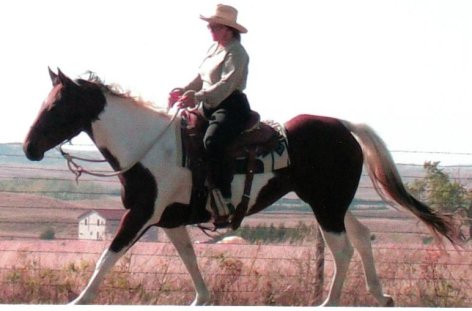
A Creative Solution for a Hard to Catch Horse
Have you ever thought; “If I only had a round pen?”
Until very recently, I’ve not had a round pen at my place for over 6 years and I have gotten along just fine. I’ve always kept an open mind about using a round pen. I do have some reservations about a few of the techniques used in a round pen because a little too much unnecessary pressure can be put on a horse when we forget about the release and draw. If we are not careful a round pen can bring out the predatory tendencies in a person which will not benefit the horse.
I’ve read a lot of horse training books on harmony and feel with horses. I’ve watched my fair share of videotapes on gentle horse breaking. I studied educational psychology in college and can see how some of it relates to the horse human relationship. I’ve attended quite a few clinics of popular clinicians both as an auditor and rider participant. I’ve learned so much from the hundreds of horses I’ve worked with through my students and the many clinics that I teach. After all of these experiences I can see the benefit of a round pen when it is used properly. But what if you don’t have one?
Many of you don’t have a round pen at home and many real-life situations are not textbook or clinic examples, so you have to be creative and figure out ways to deal with what you have. If you don’t have a round pen don’t be discouraged, just take time to think about horse psychology and the training principles you know then apply it to your situation.
Here is an example of a real life situation that I encountered recently. A client called me to help her catch a hard to catch mustang. The problem was, he was in a pasture with no round pen available and there was not even a smaller square pen which we could chase him into. A pasture several acres in size was the only available place to attempt catching this horse not to mention that there were three other horses with him. I knew that chasing this horse around until he stopped was not going to work. Bribing him wouldn’t work either, that had been attempted to no avail. The little mustang had been winning the “You Can’t Catch Me” game for some time now, so I knew I needed a game plan before arriving. Of course His favorite tactic was to hide behind the other horses. In order to solve this dilemma I started thinking about how we could use the concept of moving a horse in a round pen until he turns toward you without the advantage that real panels would provide by keeping the horse confined.
Working with what I had available I planned to see if I could catch the other horses first and tie them on the outside of the pasture, preferably in a corner. I figured that the mustang would run over to be with his buddies in the corner. I presumed that when I made him move out he would circle back so as not to get too farm from his friends, creating an invisible round pen. This was my game plan and it worked with a few alterations. Remember always have a plan but be flexible to change it when needed.
With my play book in hand I drove to the clients place. When I arrived it was raining, not buckets, but enough to get us nice and wet. We had on slickers which added another unforeseen and interesting element which we suspected would cause concern for the horses. I suggested this is a real life situation where we can't always be in a textbook clinic type environment, so let's make the best of it by using our creative thinking. I reached into my quiver full of savvy skills and principles drawing out the ones I thought we could use to set this experience up for success.
As we walked in the pouring rain and very tall and wet grass to find the horses I advised my client to not even think about catching her horse. I told her not to look at him, to ignore him completely as if he wasn’t even on the planet with us, and above all breathe. Don’t hold you’re your breath because it will create brace in your body which will cause an unfriendly appearance. Wouldn't you know the herd was in the farthest corner from where we began our journey?
When we approached the herd they snorted at our rain gear just as we thought they might. I reminded my client not to put any pressure on them, that all we need to do is blend in and become a part of the herd. It worked. The young Arab couldn't stand it, she was so curious she had to check us out. As I stood still breathing very relaxed she came up to sniff me. Then she turned farted and ran off bucking. The others followed suit but didn't go far before they circled back around us. We began to blend with the herd again. The other two mares came up to greet us, but the mustang never approached us. I suggested some other ways we could look more inviting.
After petting all three horses, we kept ignoring the horse we really wanted to catch until he finally got curious enough to come smell me. But he still said “No touching allowed” as I reached my hand out to his nose. After he quietly left I again acted like I didn't even know he was in the country. We continued to love on the other horses except the Arab who had decided I was indeed the boogie man wearing that long black slicker. So I took it off, threw it on the ground and continued to love on the other two horses. It was so funny when the Arab and the mustang started stomping my rain coat. The mustang even began eating it. While this was going on we haltered the two mares. By this time the mustang was entertaining himself with the stick on the ground, he was chewing on the handle. We laughed when he picked up the string and drug the whole thing around.
We only had two halters so we left the Arab loose. Remember my plan was to tie the other horses on the outside of the fence in the corner. But since we didn't have enough halters, the other horses didn’t belong to this gal and it was barbed wired with a bunch of farm equipment around it, we decided to not take a chance of any of them getting hurt. Instead I had my client hold the two horses we had caught about 60 feet away from the corner creating an imaginary round pen.
After putting my slicker back on I began to play with the two loose renegades. It wasn’t long before the little mustang decided to catch me!!! If you have a hard to catch horse you need to quit thinking about catching him. Use some reverse psychology. Take the attitude that you want the horse to catch you. It was amazing how well the imaginary round pen worked. The smart mustang never left 40 feet from the horses in the middle.
The Arab tried to get in our way a few times, but she was easy to move around when needed. I never once thought about catching this horse. I stayed between him and the two mares in the middle of our imaginary round pen. I mirrored his every move. I was very careful about staying in the neutral zone. I stayed in the proper position so I could still keep him from joining the two mares without driving him away. I only put pressure on him once when he tried to drive me away so he could join the two mares in the middle. It took very little energy from me to let him know he couldn't push me around. I didn’t even need to raise my hand. I just gave him the teacher look “You’re in trouble now Buddy”. I did not have a stick in my hand. I did not use a rope or the lead to direct the horse because my purpose was to draw the horse in to me not drive him away. The halter was draped over my arm in a casual way.
We were surprise that the mustang never even tried to leave the imaginary round pen. It was magical. Every time he stopped or gave the slightest indication he wanted to be with me, I walked a little toward the two mares in the middle. I was a little amazed myself how well it worked. It only took about 20 minutes before the mustang joined up with me. I still had not tried to catch him or halter him. I sent him out about 3 or 4 more times as a test to see if he was truly caught and wanted to be with me before I put the halter on without the lead. After that he continued to be with me on his own accord.
Before leaving I helped my client come up with some alternative techniques and strategies to set her up for success when she is by herself. After putting together her game plan we went to
her house to dry out and eat some lunch. It was a very successful and fun morning playing with horses because we used some creative solutions to catch a hard to catch horse even though we didn’t have a round pen, or a perfect setting to apply the principles. So the next time you are bemoaning the fact that you don’t have a round pen or a real life situation presents a less than perfect setting put on your thinking cap and experiment with the principles and savvy you have worked so hard to learn. You might just be pleasantly surprised at the result!
There is a very happy ending to this story. The next day it only took the owner 10 minutes to catch this horse using the strategies we set up for her and only 3 minutes the next time. I know that it will only get better as these two continue to develop their relationship and savvy by using creative solutions for real life situations.




